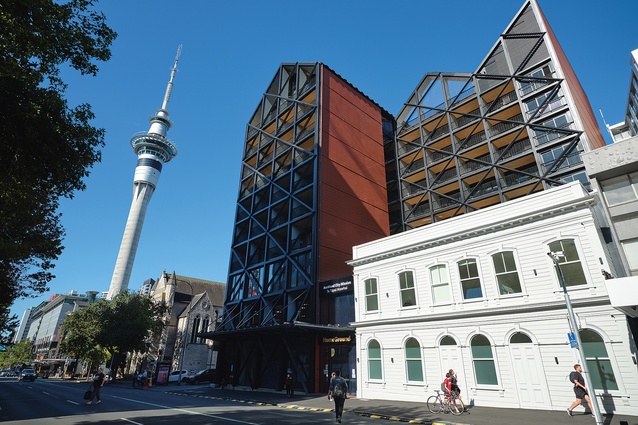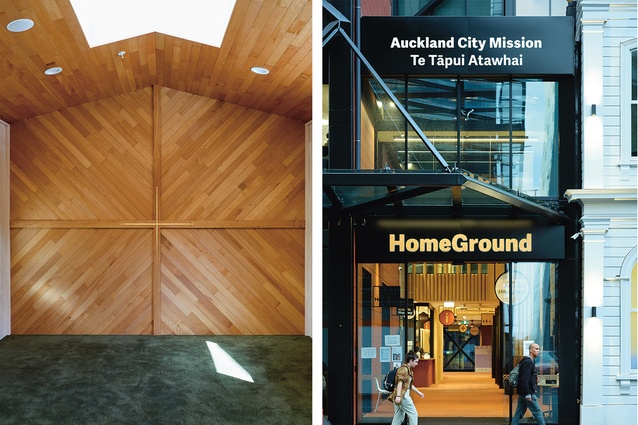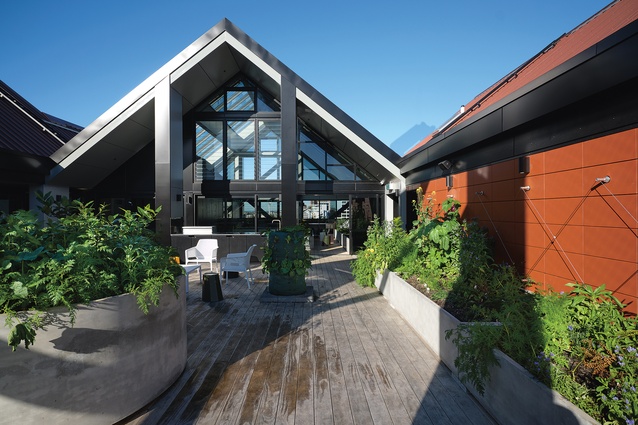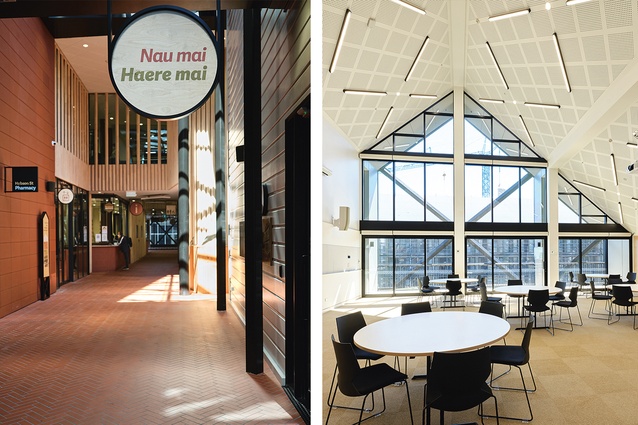Book review: HomeGround. The Story of a Building that Changes Lives
Bill McKay reviews Simon Wilson's 2022 book HomeGround. The story of a building that changes lives which discusses a new Auckland City landmark.
Hot on the heels of the opening of HomeGround comes the book of the building. Reviewed in Architecture NZ May/June 2022, Auckland City Mission’s new headquarters, designed by Stevens Lawson Architects, is a new city landmark in many ways and its 11 storeys provide facilities and apartment-style homes for the homeless, those living rough and others. For Aucklanders, the author, Simon Wilson, needs no introduction — he is a prolific commentator on Auckland’s urban issues, primarily in The New Zealand Herald. Wilson’s viewpoint is characterised by an enthusiasm for doing things better so it is no surprise that he has chosen HomeGround as the subject of his first book, with photographs by Mark Smith, a very experienced architectural photographer and one of our best.

HomeGround. The Story of a Building that Changes Lives is aimed at a general audience and is an easy, engaging read. The project developed over a very long time (thank you, Global Financial Crisis) and of particular interest is background on charitable housing providers, fund-raising and the people involved. The various incarnations of the evolving design and participants such as Rewi Thompson are covered although architects could wish for a bit more on the architectural gestation. But, if you are interested in the provision of affordable housing, both here and overseas, there are good insights into this topic, from strategies at the start through to the gritty realities of accommodating people with problems. Discussion on the incorporation of Māori values in a meaningful way is also particularly valuable.
HomeGround is, at the moment, the biggest engineered timber structure in Auckland and one chapter covers the frustrations of the consenting process — hopefully, HomeGround has smoothed the path for others in our profession trying to get innovation through Council. Nicholas Stevens and Gary Lawson have quite a few words in the book through extensive quotes, and architectural academics Deidre Brown and Karamia Müller provide a short chapter, although it is rather report-like. The photo essays and client stories are interesting, although the well-intentioned desire to name-check a lot of key City Mission staff through images does result in a slightly corporate brochure look — you know the kind of thing where the photographer, faced with yet another group portrait, strives to find a new angle or perspective to make it interesting.
As usual with Massey University Press, this book is a good size, nicely designed and replete with images. Architects will find that this book is not the usual architectural monograph we are used to — it isn’t thick with drawings and details. Indeed, there are more pictures of people than there are of parts of the building. For those of us who want to know more about the building, more labelling on the plans and sections, and more image captions, would have helped in figuring out where the spaces depicted in the book are located in the building. But do not pick this book up, leaf through it, then leave it in the bookshop — you will miss out on the bigger picture of what buildings are about from the point of view of those behind them and those who use them.















